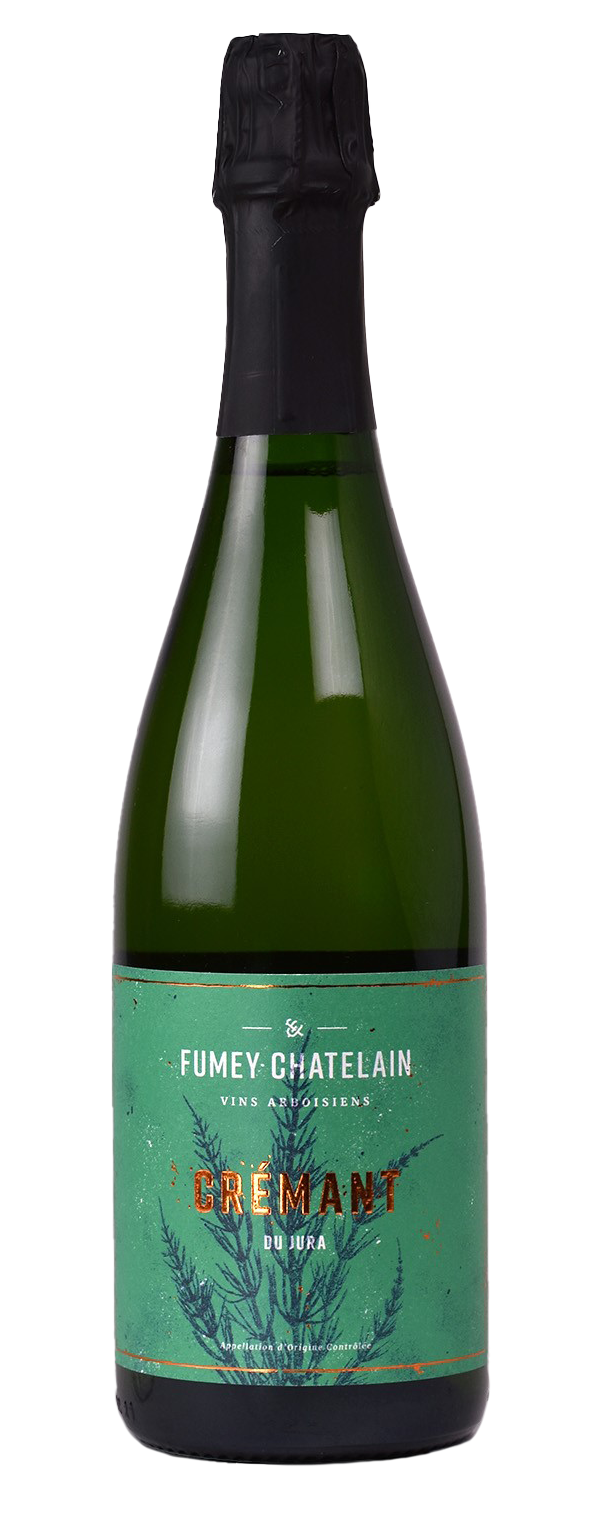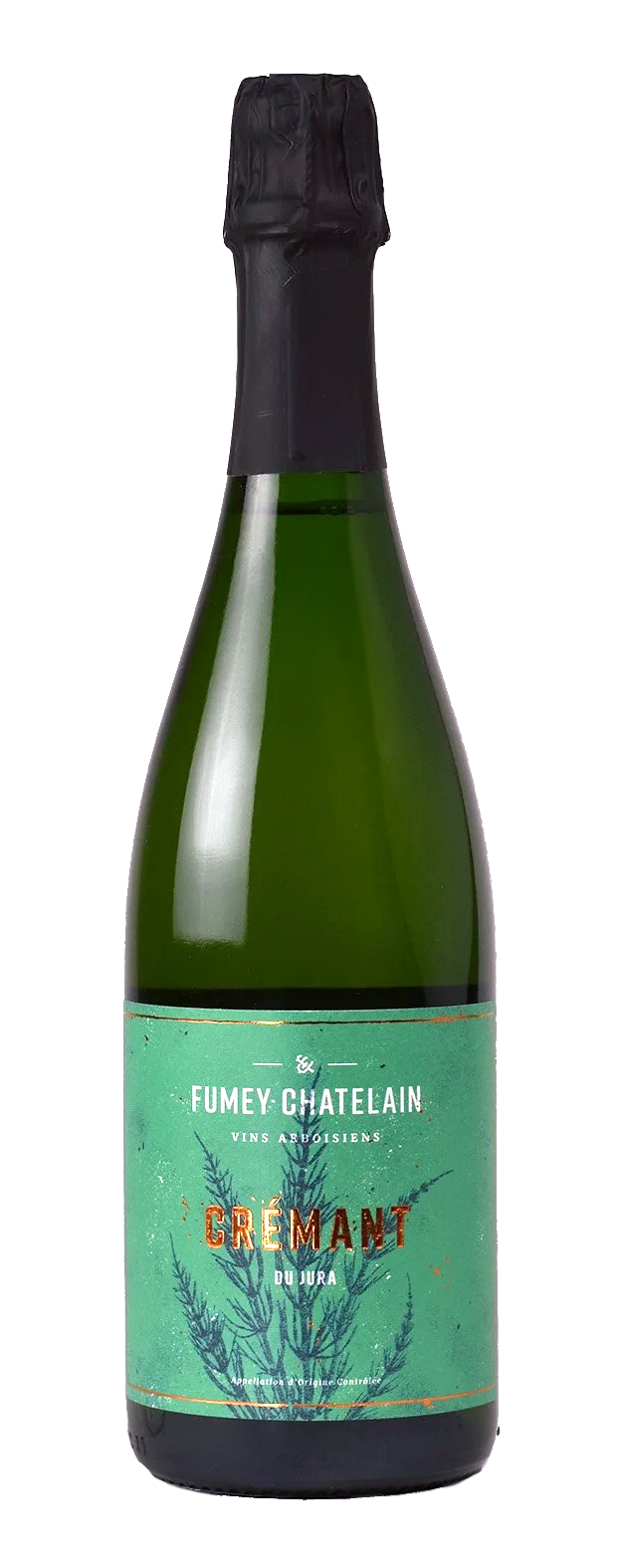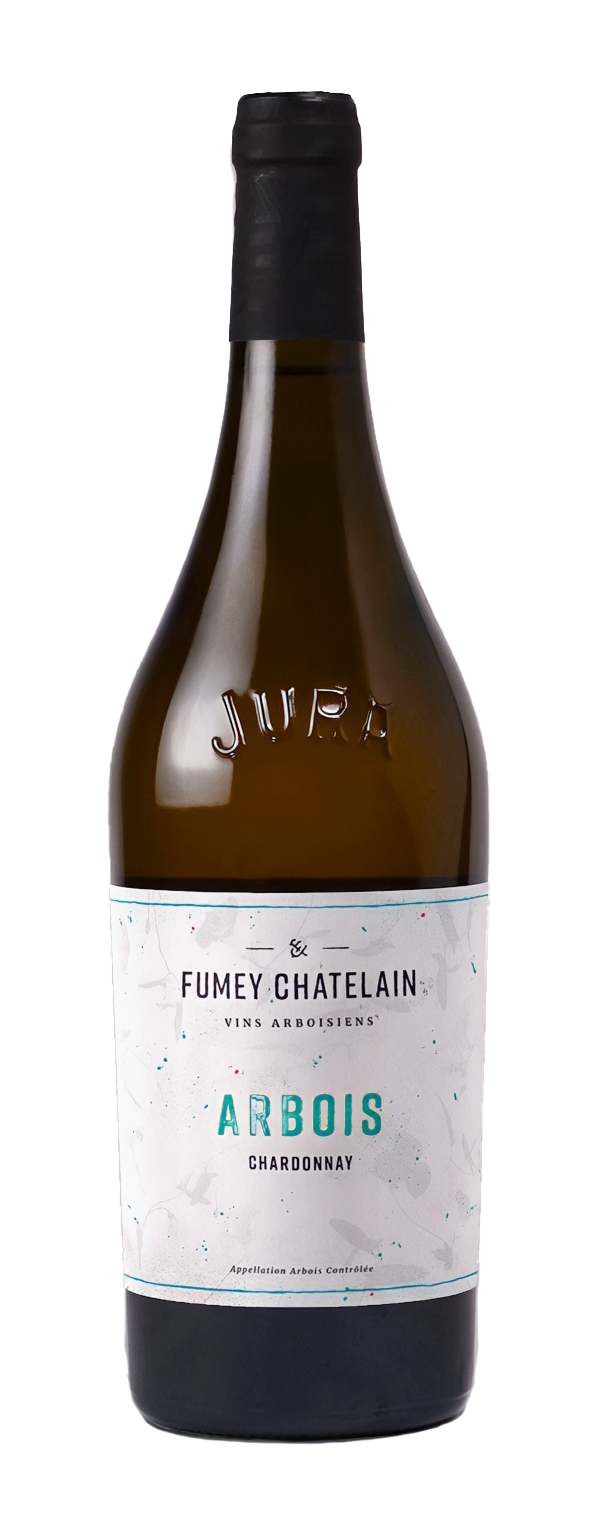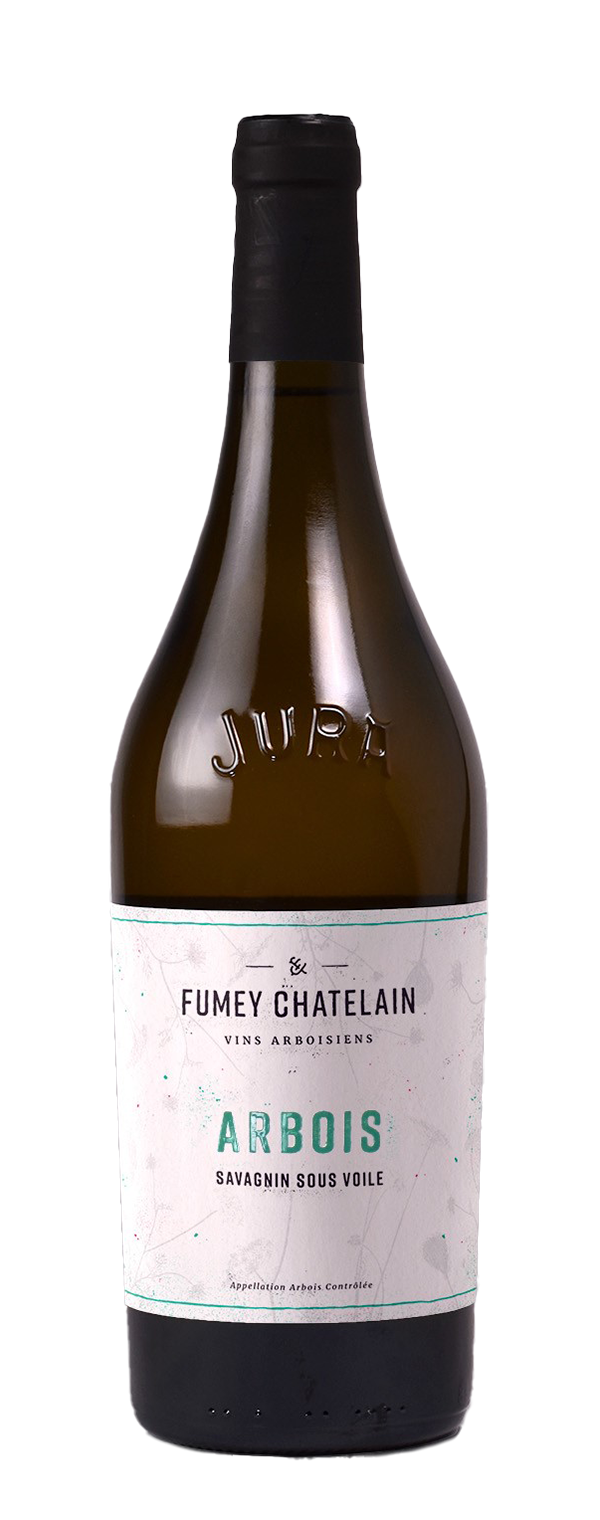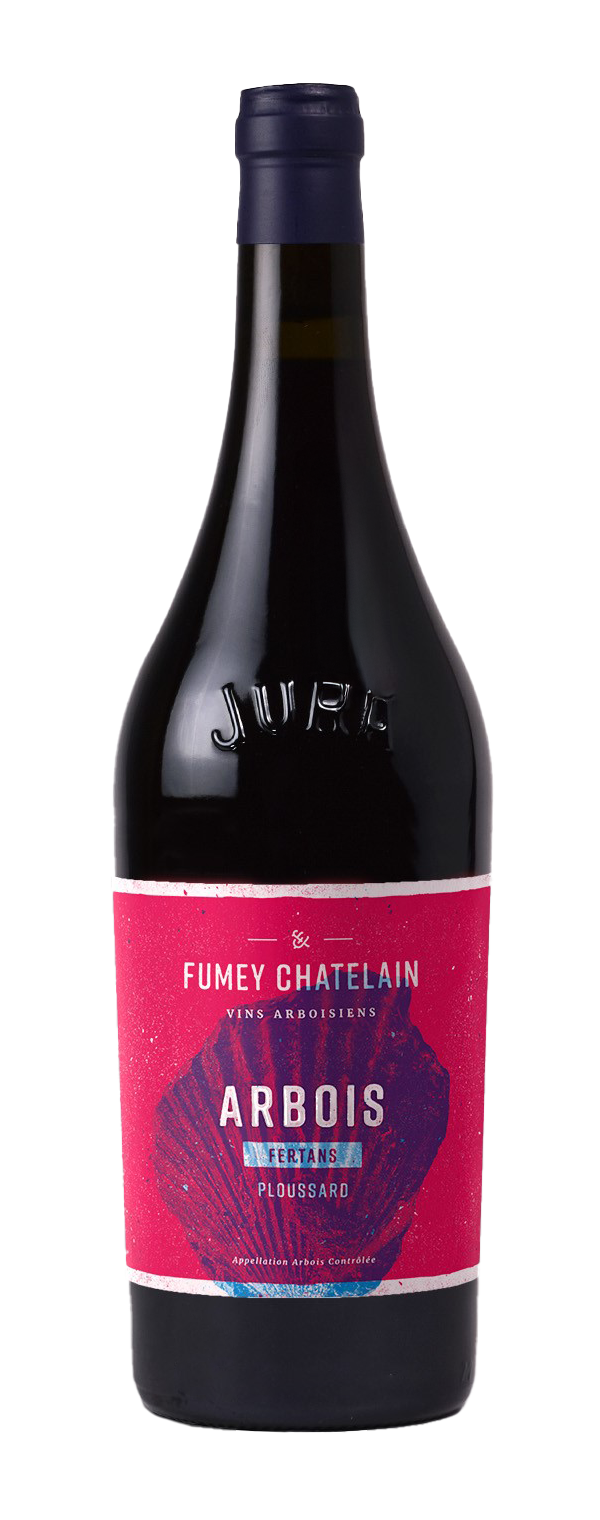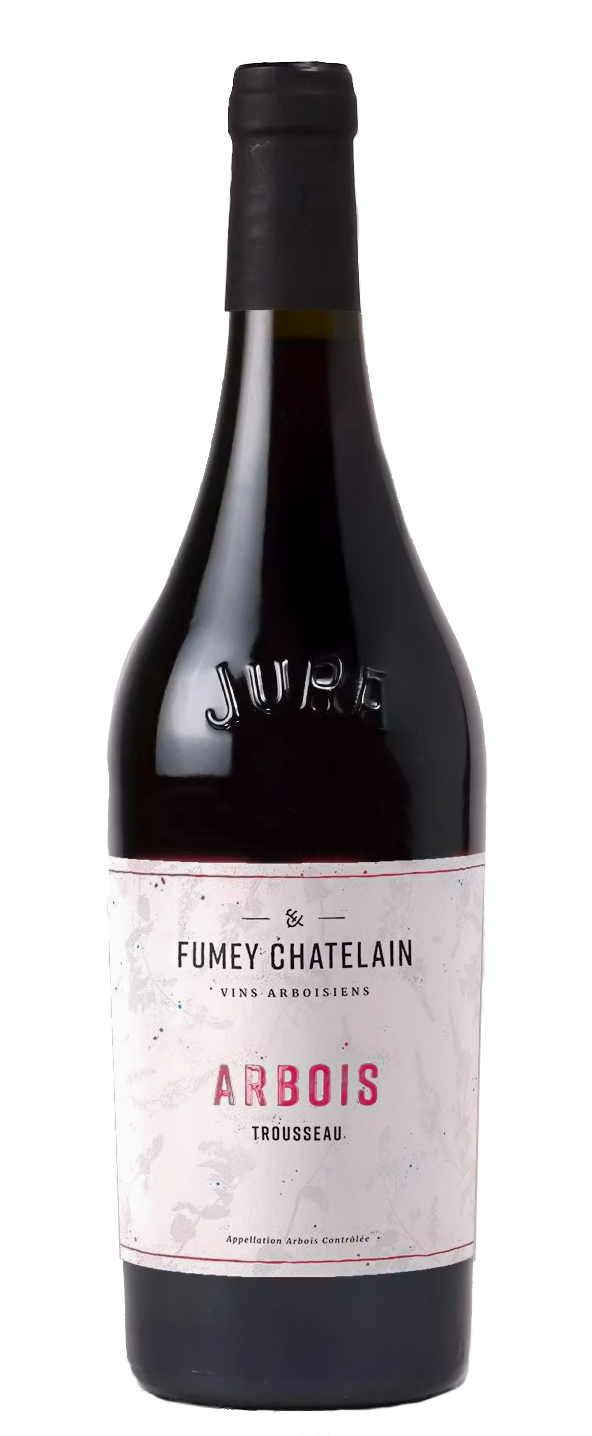Fumey Chatelain
Montigny-lès-Arsures, Jura
5 years after the domaine was founded in 1986, frost ravaged the Jura and took with it close to all of the harvest of 1991. From the rubble came an opportunity for Raphael Fumey to turn what little was left into the first wines under his own label.
Some years later, the purchase of a ruinous farmhouse in Montigny-les-arsures, which would later become the cellar and family estate solidified the Domaine Fumey Chatelain as a bona-fide producer in Jura, specifically in the appellation of Arbois, with some vineyards also in neighbouring Montigny.
Today, the wines are made by second generation Marin, with Raphael tending to the family’s 15ha under vine. Marin studied in Davaye, Burgundy before working in Australia for Spinifex, Burn Cottage in New Zealand and Crystallum in SA. His tuition at these boundary-pushing estates led to a change in the winemaking style at his family estate, introducing wild fermentation, whole bunch maceration and no fining or filtration The vineyards are managed biodynamically, with organic certification coming soon for most of the sites.
The subsequent wines are brought to us in very limited quantities. We consider ourselves lucky to have secured such a small allocation on the back of two challenging vintages punctuated with adverse weather conditions.
The Fumey Chatelain wines continue to astonish us with their verve and crystalline quality. Stylistically they are millennia away from the oxidative Jura wines of yore and present a more elegant, terroir focussed take on this amazing region. Just when we thought we’re well acquainted with them, we discover new reasons to marvel, and the new releases are quite the splendid display.
Since taking on the winemaking duties, Marin’s opened Fumey Chatelain up to the world. Prior to making their eponymous wines, Marin’s parents sold their fruit to negociants. In the Spring of 1991, the terrible frost left them with a crop too small to sell, yet beautiful enough to vinify themselves. And so, their first wines were created. After a few years making the wines here and there, borrowing barrels and space from other family vignerons, Raphaël and Adeline found an old farm in Montigny-lès-Arsures, where they established their winery, and the rest is history.
As for many of our growers, Marin’s efforts to convert the vineyards to complete organic viticulture have paid off. During his stint making wine in the New World, at Spinifex (Barossa), Crystallum (SA) and Burn Cottage (Central Otago) Marin gained a fresh understanding on how to express terroir, which he brought home with him and we’re witnessing through his pristine wines.
NV Crémant du Jura Blanc Brut
Marin treats his Crémant du Jura with the same reverence as Vin Jaune and other Jura classics. Crafted using the traditional method, this Crémant du Jura Blanc Brut exudes lively effervescence and vibrant, flavourful energy.
Winemaking
The fruit comes from organically farmed 20- 50-year-old Chardonnay vines growing on marl and limestone soil. This Blanc Brut is gently basket-pressed to collect the free-run juice, which is then wild fermented. It spends 5 months in stainless steel tank and 12 months or so in bottle sur latte.
Tasting Note
Crisp citrus, green apple, and subtle floral notes. Light-bodied yet lively, with a refreshing, long finish.
Review
“NV Crémant du Jura has a base from 2023, mostly Chardonnay from different terroirs, but this year, it has all the other varieties from Jura, and that seems to have given it more complexity. It spent 18 months with the lees and is sold as Brut Nature. It's tender and fresh, with super fine bubbles, elegant, clean and very easy to drink.”
Luis Gutiérrez, Wine Advocate. 92pts
NV Crémant du Jura Rosé
A vibrant and finely tuned sparkling rosé from Arbois, this Crémant du Jura Rosé Brut is crafted with the same precision and care that define the region’s best wines. It showcases freshness, elegance, and a delicate red-berry lift, making it a versatile sparkling for any occasion.
Winemaking
Made from organically farmed Pinot Noir, with small additions of Trousseau and Ploussard depending on the vintage, the grapes are basket-pressed and left briefly on skins before being bled off to achieve a delicate pink-orange hue. The base wine undergoes fermentation in stainless steel tanks, resting for 5 months before spending approximately 12 months on lees in bottle to develop texture, finesse, and complexity.
Tasting Notes
Bright aromas of red berries, strawberry, and subtle floral hints. The palate is fresh and precise, with fine bubbles, delicate red-berry flavors, and a lively, textured finish, perfectly balanced and expressive.
2023 Chardonnay
An authentic expression of Arbois’ terroir, the 2023 Chardonnay comes from 20 to 50 year old organically farmed vines across Montigny-les-Arsures and Arbois. Basket-pressed and wild fermented, the wine ages 18 months on lees in foudres, barrels, and stainless-steel tanks, developing both precision and texture.
Winemaking
Hand-harvested Chardonnay undergoes wild fermentation and 18 months ageing on lees in foudres, barrels, and stainless-steel tanks, preserving freshness while expressing the mineral-rich soils.
Tasting Notes
Mineral and vibrant, with yellow-fleshed fruit, white flowers, and a hint of anise. The palate is fresh, precise, and expressive, finishing long and balanced.
2022 Chardonnay ‘Sauvagny’
An expressive Chardonnay from the amphitheater of Sauavgny, the 2022 Sauvagny showcases the elegance and minerality of the region’s clay and marl soils. Vines range in age from 1962 to 2011, benefiting from both north and south exposures that contribute balance and finesse.
Winemaking
The grapes are carefully hand-harvested and fermented in a combination of large tuns, concrete eggs, and 500L and 228L barrels. The wine then ages for 18 months in the same vessels, allowing texture, complexity, and freshness to develop while reflecting the terroir.
Tasting Notes
Bright and precise, with aromas of white stone fruits, citrus blossom, and toasted almond. Subtle mineral and flinty notes give depth, and the structured palate finishes elegant and balanced.
2020 Melons Queue Rouge ‘Les Capucins’
An elegant single-vineyard Chardonnay, the 2020 Le Capucins comes from the Melons à Queue Rouge vines planted in 1973 on south-facing limestone and Lias marl soils in Montigny-lès-Arsures. Melons à Queue Rouge is a rare, historic strain of Chardonnay known for its delicate aromatics and precise expression of terroir. The vineyard’s ideal exposure ensures seamless ripening and concentration of flavors.
Winemaking
Whole bunches are basket-pressed, then fermented and aged in barrels for 12 months before being racked to stainless steel tanks, where the wine rests for a further 12 months. This natural approach, without added sulfur, preserves the purity of the fruit and highlights the vineyard’s unique character.
Tasting Notes
A tender and expressive nose with light herbal and spicy notes. The palate is fresh and precise, with subtle ripeness, a spark of flavor, and balanced acidity, finishing elegant and lively.
Review
"The first wine they made without any added sulfur, this 2020 Le Capucins Chardonnay displays a tender nose and is tasty, light, herbal and a little spicy, with a spark of flavor and good freshness. Contained ripeness, 13% alcohol, good balance and freshness. Could very well be the best of the 2020 Chardonnays here." Luis Gutiérrez, Robert Parker. 93 pts
2023 Savagnin ‘Ouillé’
A vibrant expression of Arbois’ Savagnin, this wine combines aromatic intensity with striking minerality. Sourced from several vineyards in Montigny-les-Arsures and Arbois—including La Vasée, en Longchamps, Sauvagny, la Bouthière, and la Teppes aux Loups—the vines, planted between 2007 and 2019 on marle Lias soils, are organically tended.
Hand-harvested whole clusters are gently pressed, fermented naturally on indigenous yeasts, and aged 12 months in 500 L barrels (70%) and old foudres (30%), followed by six months’ refinement in tanks.
Elegant and refreshing, the Savagnin Ouille balances crisp acidity with a mouthwatering finish, showcasing the clarity and vibrancy of Jura’s terroir.
Tasting Notes
Citrus aromas, especially lemon, mingle with pronounced mineral notes. The palate is lively and precise, finishing clean and refreshing. Enjoy with light fish dishes, or creamy cheeses.
Review
“The 2023 Savagnin Ouillé comes from 60% old vines and 40% new vines on Lias marl soils, and it matured mostly in foudre and 500-liter barrels and six months in stainless steel. It's clean, varietal and fresh, with very good acidity and citrus notes, textured, elegant and perfumed, with fine minerality and a serious profile, with 13% alcohol. It's truly delicious and very nicely priced.” Luis Gutiérrez, Wine Advocate. 94+pts
2019 Savagnin ‘Sous Voile’
A distinctive expression of Arbois, this Savagnin is aged under a ‘veil’ of yeast, which protects the wine while developing its signature nutty and saline complexity. The organically grown vines, over 45 years old, are cultivated across multiple sites on marle Jurassic soils, producing a wine of depth and harmony.
Winemaking
Hand-harvested whole clusters are gently pressed and fermented on indigenous yeasts. The wine then spends 36 months under a veil in 228 L barrels, allowing slow oxidative development while maintaining freshness and structure.
Tasting Notes
Aromas of green apple, almond paste, lemon, lime, walnut, and hazelnut. The palate is full-bodied yet precise, with lively acidity and a saline, mouthwatering finish, perfect with smoked fish, aged cheeses, or roasted poultry.
2023 No Sin Tou Tsefs
A vibrant Jura red, this blend of Pinot Noir (40%), Ploussard (40%), and Trousseau (20%) combines elegance with freshness. The organically tended vines, planted between 1954 and 2002 across Montigny-les-Arsures and Arbois, grow on clay, limestone, and marle soils.
Winemaking
Hand-harvested berries undergo gentle infusion-style maceration with minimal intervention, followed by slow pressing. The wine ages 10 months in a combination of large oak casks, barrels, and stainless-steel tanks, preserving freshness while developing texture and complexity.
Tasting Notes
Aromas of crushed strawberries, redcurrants, and a hint of smoke. The palate is supple and expressive, with vibrant fruit, fine tannins, and a lively, precise finish. Perfect with roasted poultry, charcuterie, or light red meats.
Review
“The entry-level red 2023 No Sin Tout Tsefs was produced using the three red grapes, 40% Pinot Noir, 40% Ploussard and 20% Trousseau. The blend is different each year, with the idea to make an easy wine with a moderate 12% alcohol. It is fresher and cooler, straightforward and with fine tannins.” Luis Gutiérrez, Wine Advocate. 91+pts
2023 Ploussard ‘Fertans’
An expressive and delicate red from Montigny-les-Arsures, the 2023 Ploussard ‘Fertans’ is grown organically on Lias marle soils. The single-vineyard grapes, planted in 1954, produce a wine of finesse, lightness, and refined structure.
Winemaking
Hand-picked and gently destemmed, the grapes undergo a minimal-intervention infusion-style maceration for around ten days. The wine is then slowly pressed and aged 10 months in large oak casks, yielding smooth texture and subtle complexity.
Tasting Notes
Pale red with a hint of orange, it displays aromas of red berries and delicate floral notes. The palate is light, fresh, and refined, with very fine tannins and a lively, precise finish—perfect for barbecues, light red meats, or charcuterie.
Review
"The fresh and pretty pale red 2023 Ploussard Fertans comes from a 70-year-old south-facing vineyard and was produced with the traditional hand-destemming in the vineyard. It has a somewhat orangey color, with a very light profile, with very fine tannins and contained ripeness, 12.5% alcohol and unnoticeable oak. Marin calls it a barbecue wine. It's delicious." Luis Gutiérrez, Wine Advocate. 93 pts
2022 Ploussard ‘Brouille Menage’
A charming and delicate Jura red, the 2022 Ploussard ‘Brouille Ménage’ showcases the light-hearted and versatile nature of this variety. The name pays homage to Marin’s grandfather, who humorously attributed relationship havoc to Ploussard.
Winemaking
Sourced from old vines planted between 1952 and 1970 across Arbois and Montigny-lès-Arsures on marl soils, the grapes are hand-harvested and destemmed in the vineyard. Fermentation occurs over 20 days on skins, followed by 10 months of aging in large foudre (60%) and stainless-steel tanks (40%), preserving freshness and texture.
Tasting Notes
Aromas of red berries and gentle spice. The palate is lifted, silky, and approachable, with bright fruit and soft tannins, finishing fresh and effortless—ideal with charcuterie, roasted poultry, or light red meats.
2023 Trousseau ‘Le Bastard’
An elegant expression of Trousseau from Montigny-les-Arsures, the 2023 Le Bastard is sourced from carefully selected vineyards on marle and limestone soils. The wine showcases finesse, structure, and aromatic clarity, reflecting the lighter, fresher style of the vintage. The name “Le Bastard” references the grape’s Iberian alias, Bastardo.
Winemaking
Hand-harvested fruit, with partial whole clusters, is gently macerated and fermented naturally on indigenous yeasts. The wine ages 10 months in foudres and barrels, allowing subtle texture and depth while preserving freshness.
Tasting Notes
Aromas of crushed strawberries, redcurrants, and gentle spice. The palate is medium-bodied, silky, and precise, with soft tannins and a lively, lingering finish—ideal with roasted poultry, charcuterie, or light red meats.
Review
"The 2023 Le Bastard Trousseau is pale, delicate, floral and aromatic, reflecting the fresher style of the reds in the vintage, with a contained 12.5% alcohol. It was produced with the old Trousseau à la Dame grapes, a massal selection planted in 2006 on land that had Savagnin before in two lieux-dits, Aux Loges and Aux Barbi, on Lias marl and some limestone soils. It had a shorter maceration of only 10 days, and is fresh and drinkable but with seriousness." Luis Gutiérrez, Wine Advocate. 93+ pts
2022 Trousseau ‘Vieilles Vignes’
An elegant expression of Trousseau from Montigny-les-Arsures, this wine is sourced from carefully selected vineyards on marle and limestone soils. The fruit is hand-harvested, with partial whole clusters, gently macerated, and fermented naturally on indigenous yeasts. It is then aged 10 months in stainless steel, producing a wine of finesse, structure, and aromatic clarity.
Winemaking
The old Trousseau vines were planted between 1962 and 1970 on clay and limestone soil. The grapes are picked from a couple of vineyards in Montigny-les-Arsures. 50% are destemmed while the rest is kept whole, then pressed and macerated on skins for 20 days, following a wild fermentation in stainless steel tanks. The wine remains there for 10 months.
Tasting Notes
Aromas of crushed strawberries, redcurrants, and gentle spice. The palate is medium-bodied, silky, and precise, with soft tannins and a lively, lingering finish—ideal with roasted poultry, charcuterie, or light red meats.
Review
"The 2022 Trousseau Vieilles Vignes has a bright ruby color, a perfumed nose with something mineral, stony and earthy and an infused palate. It was produced with no punch-downs and a very soft extraction, and the ripeness from the vintage is reflected in the 14% alcohol. Drink 2025-2030." Luis Gutiérrez, Wine Advocate. 93 pts
2023 Pinot Noir ‘Aux Mélinaux’
A refined and elegant Arbois Pinot Noir, the 2022 Les Melinaux is crafted from organically farmed vines on clay and limestone soils. Hand-harvested whole bunches highlight the purity of the fruit and showcase the finesse of this terroir.
Winemaking
Grapes are harvested in the cool mornings and undergo infusion-style fermentation with minimal intervention and indigenous yeasts. Maceration lasted around 20 days, followed by gentle pressing in a pneumatic press and 12 months aging in 228L oak barrels.
Tasting Notes
Aromas of dark cherries and red berries with subtle spice and elegant oak. The palate is supple and textured, with silky tannins and a persistent, refined finish. Excellent ageing potential, gaining complexity and finesse over time.
2017 Vin Jaune
Fumey‑Chatelain wines marry ancient tradition with a spirit of experimentation, all crafted through careful, natural vinification. Among them, Vin Jaune shines as the pinnacle. Dubbed the "gold of Jura," it mesmerises with its aromatic complexity and versatile flavors, captivating wine enthusiasts worldwide.
Winemaking
The Vin Jaune undergoes 7 years of ageing in old oak under a yeast veil (sous-voile). The barrels are filled with just enough wine to allow a pocket of air on the surface. A layer of yeast then forms a protective film over the wine, guarding it against oxygen in a process called biological ageing. This slow, meticulous process allows the wine to develop its unique characters, particularly those derived from the yeast itself.
Tasting Notes
A complex and aromatic Vin Jaune, showing intense notes of toasted almond, green apple, and dried citrus peel. Hints of smoky peat, hazelnut, and subtle floral nuances add depth and intrigue. The palate is vibrant and structured, with a long, focused finish that balances freshness and richness.
2018 Vin de Paille
Marin produces his Vin de Paille only in the finest vintages, when the fruit is flawless. These wines showcase precision and elegance, balancing richness with vibrant freshness.
Winemaking
The Chardonnay and Savagnin grapes are hand-harvested in crates and dried for three to five months in the attic, traditionally strung from rafters to optimise airflow and minimize rot. Occasionally, noble rot may appear, further concentrating the sugars. Once pressed, the juice undergoes a slow fermentation and is aged in barrels for three years, resulting in a richly layered yet refined wine.
Tasting Notes
Aromatic and layered, with notes of dried apricot, orange zest, honey, and toasted almonds. Subtle floral and spice hints add complexity, while the palate remains fresh and vibrant despite its richness. The wine has a long, elegant finish, balancing sweetness with zesty acidity.









